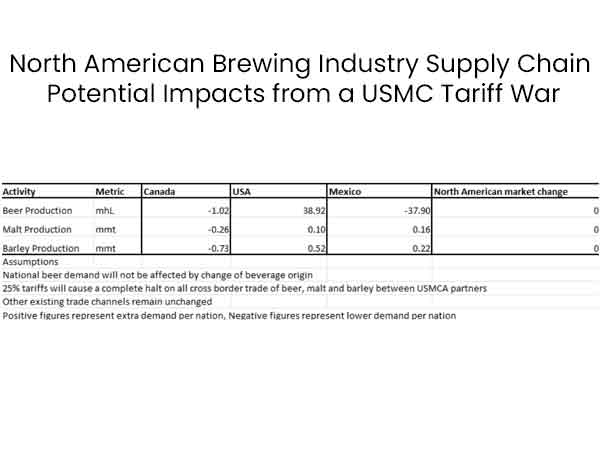The Australian barley industry is on track to harvest a record 25/26 crop. Following the…
Like many business activities in North America, the Brewing industry and it’s supply chain is heavily integrated across the three nations of the region. After years of free trade under the USMCA and NAFTA before that, the cross border movements of Beer, Malt and Barley is extensive. Around 20% of all beer consumed in the USA is brewed in Mexico, 5% of Canada’s beer production goes into the USA, Malt and Barley are shipped South from Canada to support the brewing and malting industries in America and Mexico and the USA can be an important source of malt and barley for Mexican brewers.
Should the Trump tariffs of 25% be applied, in a market that is extremely price sensitive, the current brewing industry cross border trade is likely to completely stop. If that were to happen, then the North American Brewing supply chain would fracture into three separate markets that would look starkly different. On the assumption domestic beer demand in each country would not change (despite the inflationary pressures that would follow) and that domestic beer consumption would replace imports, following is an estimate of the changes the industry is likely to face.

American brewers would be the big winners at the expense of Brewers in the North of Mexico and the impact on the Canadian brewing industry would not be insignificant either. American maltsters would have improved prospects and an additional 0.5mmt of malting barley would need to be sourced domestically and/or from export origins unaffected by American tariffs.
Maltsters in Canada are likely to be heavily impacted and there would be an estimated +700kmt of malting barley not required in the Canadian supply chain, presumably becoming available for export.
Ironically, the Mexican maltsters could remain unaffected due to a loss of cross border competition although Northern malthouses are likely to be particularly stressed and competition from maltsters outside North America is likely to be acute.
The exact impact will vary but it’s clear: the impact will be substantial!

